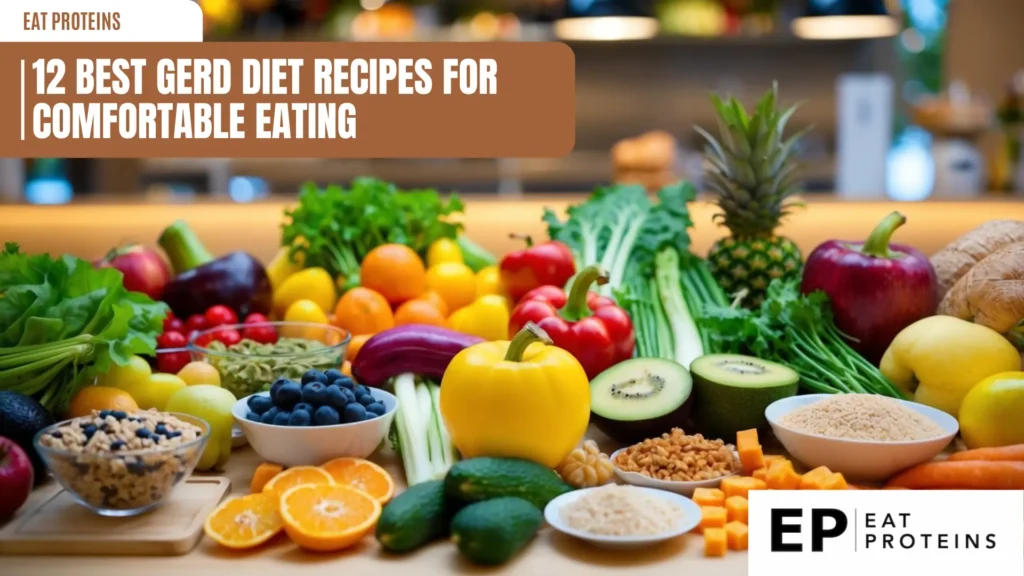
Creating a diet for gastroesophageal reflux disease (GERD) can significantly improve comfort and reduce symptoms. I will share 12 of the best GERD diet recipes that are both delicious and easy to prepare. These recipes offer tasty alternatives while helping to manage the challenges of living with GERD.
Incorporating suitable foods into my meals is essential for maintaining my health. By focusing on ingredients that are gentle on the stomach, I can enjoy my meals without the worry of flare-ups.
1. Baked Salmon

Baked salmon is a simple and healthy dish that fits well into a GERD-friendly diet. Salmon is rich in omega-3 fatty acids, which are good for heart health.
I find it easy to prepare. Here are the steps I follow:
- Preheat the Oven: I set my oven to 400°F (200°C).
- Prepare the Salmon: I take a salmon fillet and place it on a baking sheet lined with parchment paper.
- Add Seasoning: I lightly season the salmon with salt and olive oil. I avoid strong spices and the use of citrus, as they can trigger GERD symptoms.
- Bake: I put the salmon in the oven and bake it for about 12-15 minutes or until it flakes easily with a fork.
This dish is not only easy to prepare but also provides a nutritious meal. I often serve it with steamed vegetables, keeping my meals balanced and gentle on the stomach.
2. Quinoa Salad
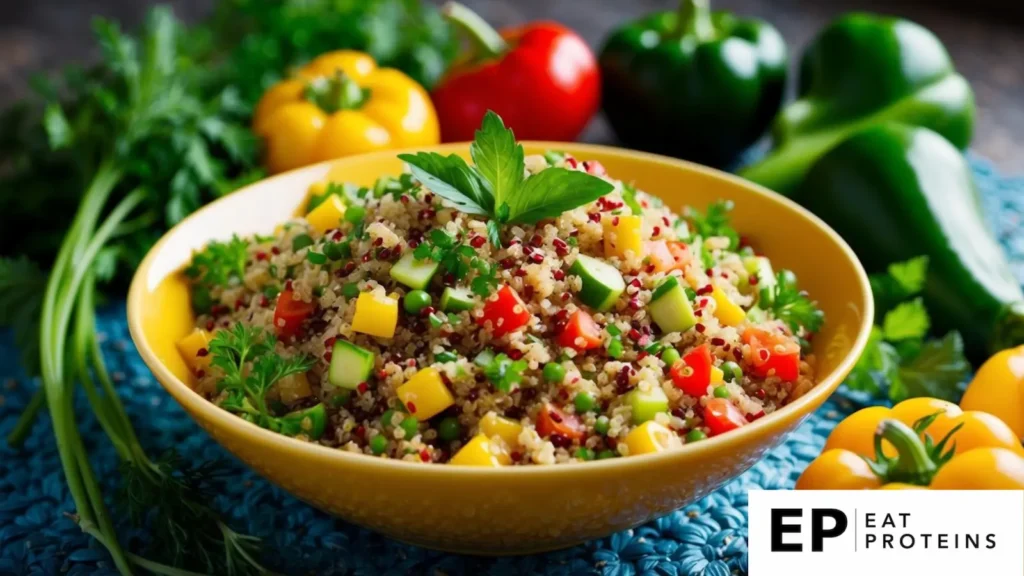
Quinoa is a nutritious grain that can be great for people with GERD. It is high in protein and gluten-free. This makes it a healthy base for salads. Quinoa is easy to digest, which is important for preventing reflux.
To make a quinoa salad, gather the following ingredients: 1 cup quinoa, 2 cups water, 1 cucumber (diced), 1 bell pepper (diced), 1 cup cherry tomatoes (halved), and fresh herbs like parsley or basil.
Here are simple steps to prepare the salad:
- Rinse the quinoa under cold water.
- In a pot, combine the quinoa and water.
- Bring to a boil, then lower the heat and cover.
- Cook for about 15 minutes or until the water is absorbed.
- Let it cool for a few minutes before fluffing it with a fork.
Next, mix in the cucumber, bell pepper, cherry tomatoes, and herbs. You can dress the salad with olive oil and lemon juice for added flavor. This dish is not only tasty but also vibrant and filling.
3. Chicken Breast with Veggies
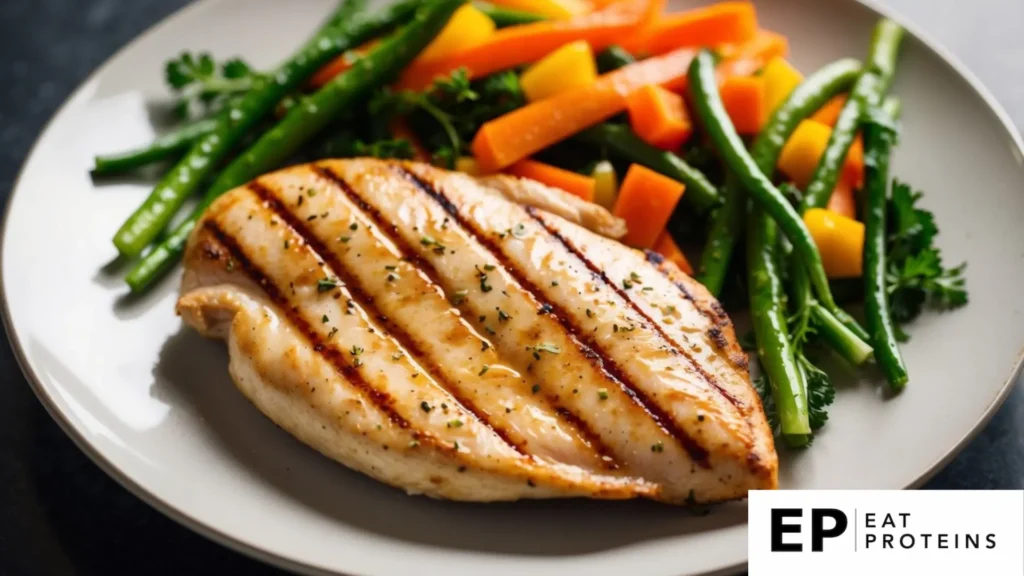
Chicken breast with veggies is a simple and healthy dish that fits well into a GERD-friendly diet. Chicken is lean and low in fat, making it a good choice. Pairing it with a variety of vegetables adds flavor and essential nutrients.
To make this dish, I start by gathering my ingredients. I use one chicken breast, a mix of my favorite veggies, and some olive oil for cooking.
The cooking process is easy. Here are the steps I follow:
- Preheat the oven to 375°F (190°C).
- Prepare my chicken breast by seasoning it lightly with salt and pepper.
- Chop up vegetables like bell peppers, zucchini, and spinach.
- Toss the veggies with a little olive oil and place them around the chicken on a baking dish.
- Bake everything for 25–30 minutes, or until the chicken is cooked through and the vegetables are tender.
This dish is quick to prepare and easy to customize. I enjoy it often, knowing it won’t trigger my GERD symptoms.
4. Oatmeal with Bananas
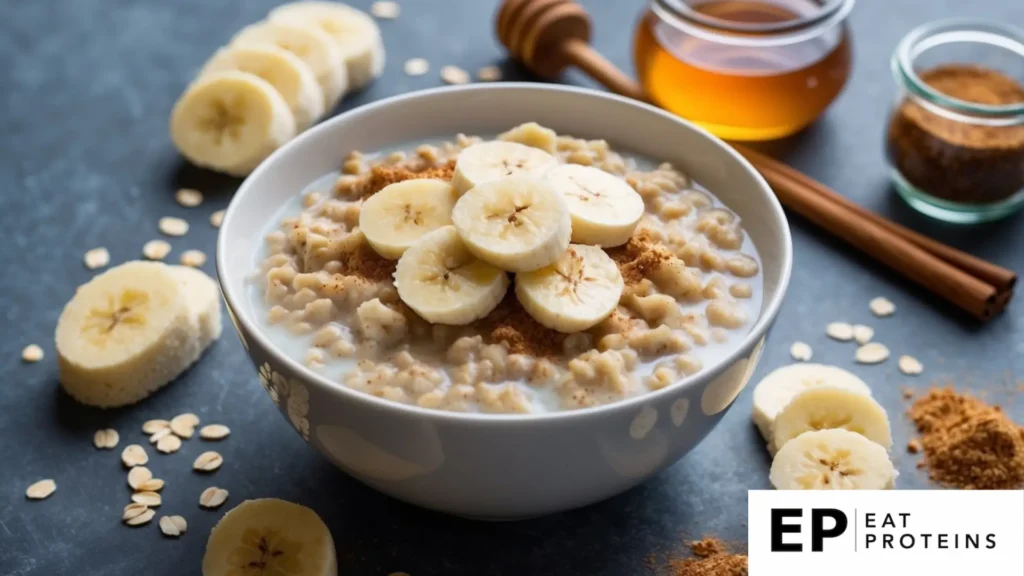
Oatmeal with bananas is a simple and nutritious breakfast for those managing GERD. Oatmeal is a whole grain that may help absorb stomach acid, while bananas can provide a soothing effect.
Making this dish is very easy. I prepare it in just a few steps.
- Start by measuring 1 cup of water or milk and bring it to a boil in a saucepan.
- When it’s boiling, add 1/2 cup of rolled oats.
- Reduce the heat and let it simmer for about 5 minutes, stirring occasionally.
- Once the oats are soft, remove the saucepan from the heat.
- Slice 1 banana and mix it into the cooked oatmeal.
I find that adding a pinch of cinnamon can enhance the flavor while remaining gentle on my stomach. This dish is filling and can keep me satisfied throughout the morning. Enjoying oatmeal with bananas is a delicious way to start the day.
5. Ginger Carrot Soup
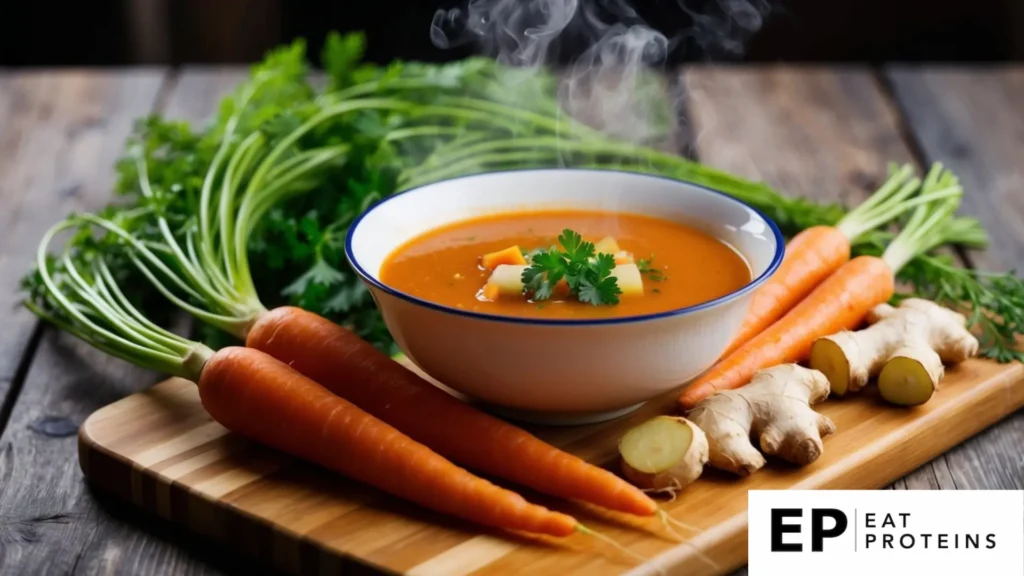
Ginger Carrot Soup is a flavorful dish that is gentle on the stomach. It is a great choice for those following a GERD diet since both ginger and carrots can help ease digestive discomfort.
Making this soup is quite easy. I can prepare it in about 30 minutes. Here’s how I do it:
- Gather Ingredients: I need 1 tablespoon of olive oil, 1 onion (diced), 4 cups of chopped carrots, 2 teaspoons of grated fresh ginger, 4 cups of vegetable broth, and salt to taste.
- Sauté the Onion: In a pot, I heat the olive oil over medium heat. Then, I sauté the diced onion until it becomes soft, which takes about 5 minutes.
- Add Carrots and Ginger: Next, I add chopped carrots and grated ginger to the pot. I cook these for about 5 more minutes.
- Pour in Broth: After that, I add the vegetable broth and bring the mixture to a boil. Once boiling, I reduce the heat and let it simmer for 15-20 minutes until the carrots are tender.
- Blend: Finally, I use an immersion blender to puree the soup until it’s smooth. I season with salt as needed before serving.
This soup is warm, nourishing, and perfect for a soothing meal.
6. Tofu Stir-Fry
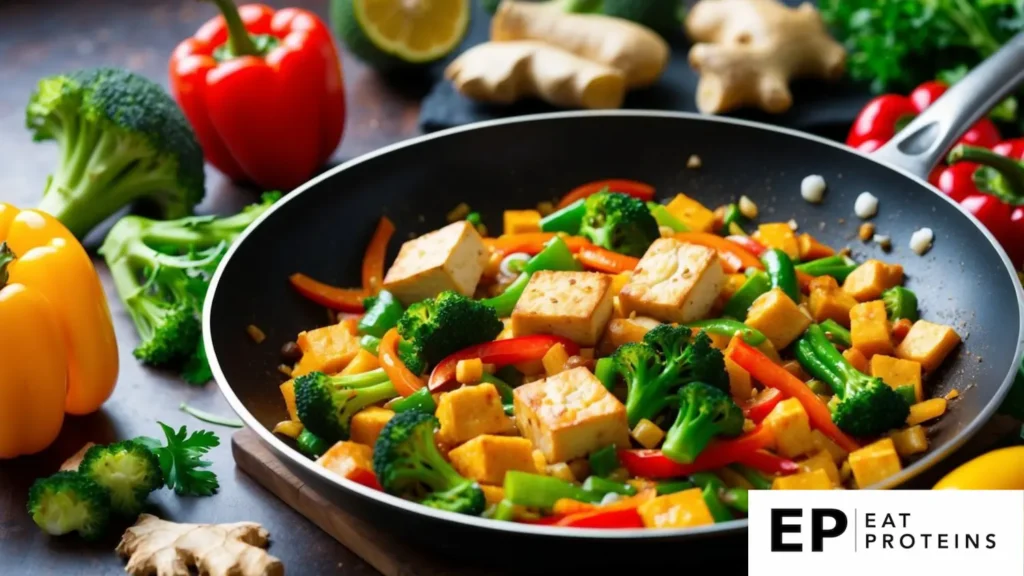
Tofu stir-fry is a great dish for those following a GERD-friendly diet. Tofu is a good source of protein and is low in acidity. It can be flavorful with the right ingredients while also being gentle on the stomach.
Making a tofu stir-fry is quite easy. I enjoy preparing it because it only takes about 20 minutes from start to finish. You need a few simple ingredients like tofu, vegetables, and a low-acid sauce.
Here’s how I make it:
- Start by pressing 14 oz of firm tofu for about 15 minutes to remove excess moisture.
- Cut the tofu into cubes.
- Heat 1 tablespoon of olive oil in a large pan over medium heat.
- Add the tofu and cook until golden, about 5-7 minutes.
- Toss in 2 cups of your favorite vegetables, such as bell peppers and broccoli.
- Stir-fry for another 5 minutes until the veggies are tender.
- Add a splash of low-sodium soy sauce or ginger for added flavor.
This dish can be served over steamed rice for a complete meal. I often enjoy it as a quick and satisfying option that fits my dietary needs.
7. Smoothie with Almond Milk
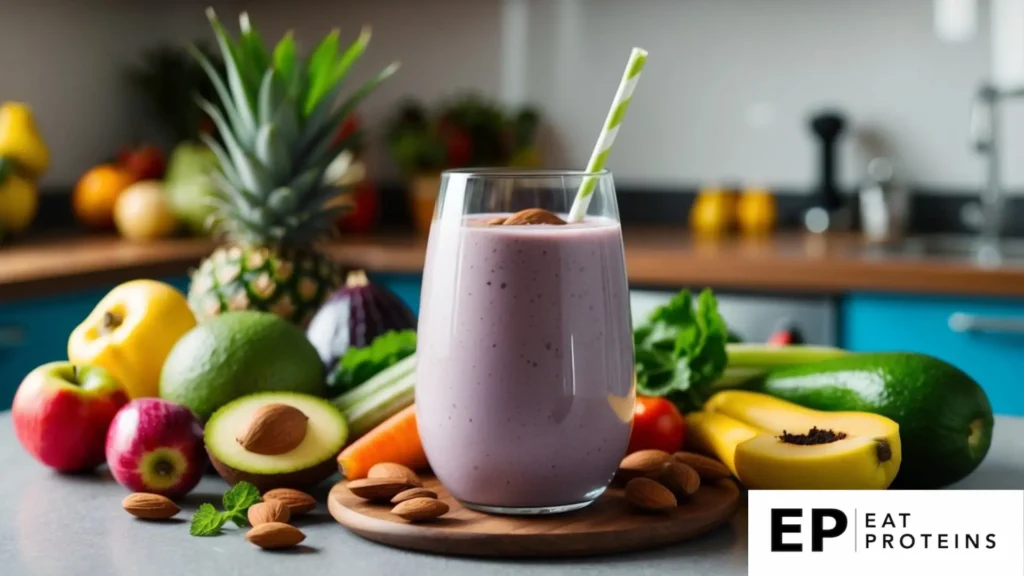
A smoothie with almond milk is a simple and delicious option for those following a GERD diet. Almond milk is low in acidity, which makes it a great choice for reducing reflux symptoms.
Making this smoothie is easy and quick. I usually gather my ingredients first. I prefer using one banana, one cup of almond milk, and a handful of spinach.
Here are the steps I take:
- Peel the banana and break it into smaller pieces.
- Add the banana, almond milk, and spinach to a blender.
- Blend on medium speed until smooth.
This smoothie is not only refreshing but also provides nutrients without triggering acid reflux. I can customize it by adding other non-acidic fruits if I want. Enjoying this smoothie in the morning or as a snack can be both satisfying and safe for my stomach.
8. Turkey Meatballs

Turkey meatballs are a great option for a GERD-friendly diet. They are lean, flavorful, and easy to prepare. Using ground turkey helps reduce fat while still providing protein.
To make turkey meatballs, I gather simple ingredients like ground turkey, breadcrumbs, and spices. The process is straightforward and takes about 30 minutes from start to finish.
Here are the steps I follow:
- Preheat the oven to 375°F (190°C).
- Mix 1 pound of ground turkey with 1/2 cup of breadcrumbs, 1 egg, and spices like salt and pepper in a bowl.
- Shape the mixture into small balls, about 1 inch in diameter.
- Place them on a baking sheet lined with parchment paper.
- Bake for 20-25 minutes or until they are cooked through.
These meatballs are versatile. I can serve them with a simple side of steamed vegetables or whole-grain pasta. They are satisfying and gentle on the stomach, making them perfect for anyone managing GERD.
9. Steamed Broccoli

Steamed broccoli is a nutritious vegetable that is gentle on the stomach. It is low in calories and rich in vitamins, making it an excellent choice for a GERD diet.
I find it very easy to prepare. All I need are fresh broccoli florets, water, and a steamer. The process takes about 5-7 minutes.
To cook steamed broccoli, I follow these simple steps:
- Rinse the broccoli under cold water to remove any dirt.
- Cut the broccoli into uniform florets for even cooking.
- Bring a pot of water to a boil and place the steamer basket above it.
- Add the broccoli florets to the steamer basket.
- Cover and steam for 5-7 minutes until they are bright green and tender.
I like to season steamed broccoli with a little salt or a splash of lemon juice. It adds flavor without irritating my stomach. This simple dish can be a great side or a healthy addition to salads.
10. Whole Wheat Pasta
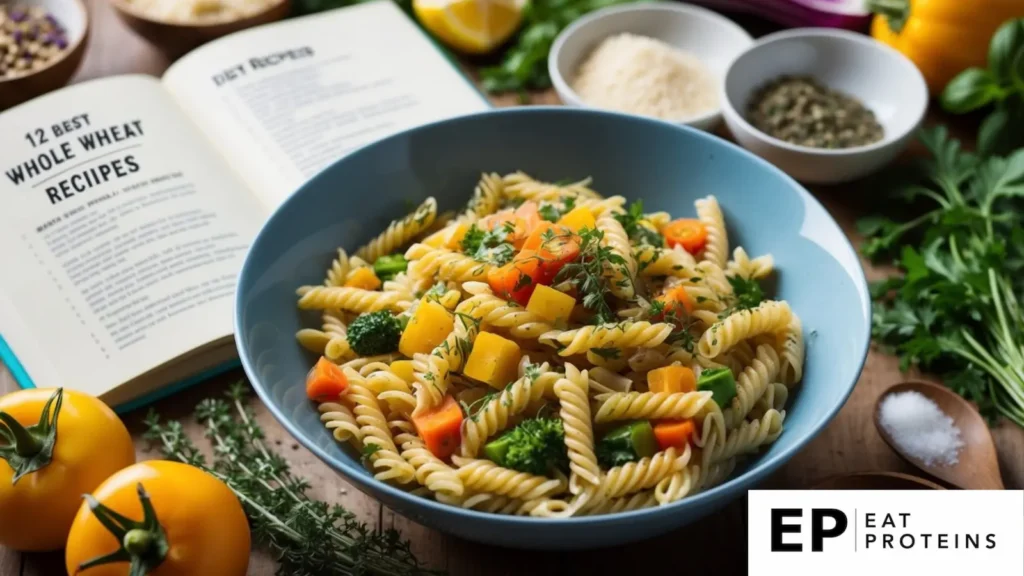
Whole wheat pasta is a healthier alternative to regular pasta. It is made from whole grain flour, which retains more nutrients and fiber. This makes it a good option for those with GERD.
Making whole wheat pasta is quite simple. I usually follow these steps:
- Boil water in a large pot.
- Add a pinch of salt to the boiling water.
- Add the whole wheat pasta and cook for 8-10 minutes, stirring occasionally.
- Taste a piece to check for doneness, then drain.
Pairing whole wheat pasta with soothing ingredients is key. I often add cooked vegetables, lean proteins, or low-acid sauces. These choices help minimize any potential reflux symptoms.
This type of pasta can be versatile. I enjoy using it in salads, casseroles, or as a side dish. With just a few simple steps, I can prepare a delicious meal that fits my dietary needs.
11. Non-Fat Yogurt

Non-fat yogurt is a great choice for those with GERD. It is smooth and creamy, making it easy to digest. Plus, it provides a good source of protein without the added fat that can trigger symptoms.
Making non-fat yogurt at home is simple. Here are the steps:
- Ingredients: I start with 4 cups of non-fat milk. I also need a couple of tablespoons of plain yogurt with active cultures.
- Heat the Milk: I heat the milk in a saucepan over medium heat until it just starts to simmer. Then, I remove it from the heat.
- Cool the Milk: I let the milk cool down to about 110°F (43°C). This temperature is perfect for the yogurt cultures to grow.
- Add Yogurt: I mix in the plain yogurt thoroughly. It’s important to ensure it’s well combined.
- Incubate: I cover the mixture and place it in a warm spot, like an oven with the light on, for about 6-8 hours. This helps the cultures grow.
- Chill: After incubation, I refrigerate the yogurt for a few hours before serving. This makes it taste fresh and delicious.
Non-fat yogurt can be enjoyed plain, or I like to add fruits or honey for extra flavor while keeping it GERD-friendly.
12. Hummus with Carrot Sticks
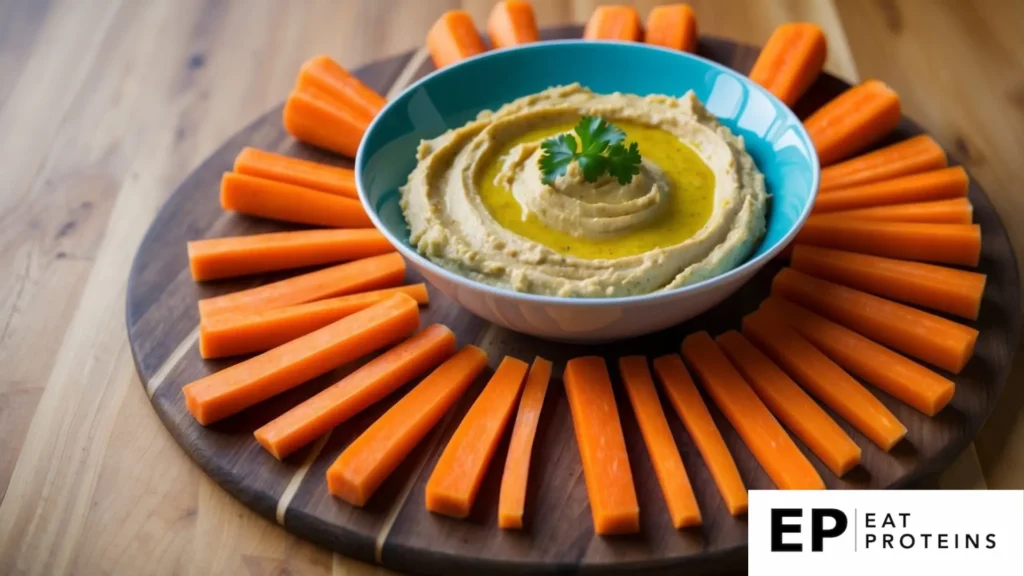
Hummus is a creamy spread made from blended chickpeas, tahini, lemon juice, and garlic. It’s a great snack for those with GERD because it is low in acidity and easy to digest. Pairing hummus with fresh carrot sticks makes for a healthy and satisfying treat.
Making hummus is simple and quick. First, I gather my ingredients: 1 can of chickpeas, 2 tablespoons of tahini, 2 tablespoons of lemon juice, 1 clove of garlic, and salt to taste.
Next, I drain and rinse the chickpeas. Then, I place them in a blender along with the tahini, lemon juice, garlic, and salt. I blend until smooth. If the mixture is too thick, I add a tablespoon of water until I reach the desired consistency.
While the hummus blends, I wash and cut fresh carrots into sticks. Once the hummus is ready, I serve it in a bowl with the carrot sticks on the side.
This snack is not only tasty but also full of nutrients. It’s easy to prepare and makes for a great addition to my GERD-friendly diet.
What Is GERD?
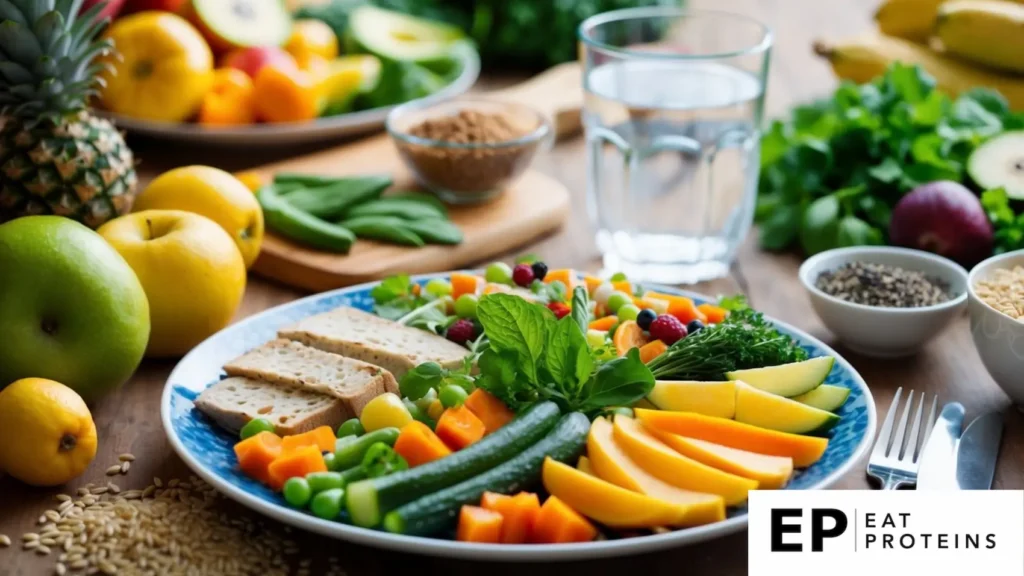
Gastroesophageal reflux disease (GERD) is a common condition that affects many people. It occurs when stomach acid flows back into the esophagus, causing uncomfortable symptoms that can impact daily life. I will explain what GERD is and identify its most common symptoms.
GERD is a chronic digestive disorder. It happens when the lower esophageal sphincter (LES) becomes weak or relaxes inappropriately. This allows stomach contents, including acid, to flow back into the esophagus.
The esophagus is the tube that carries food from the mouth to the stomach. When acid from the stomach backs up into the esophagus, it can cause inflammation and damage. This condition can lead to complications like esophagitis and Barrett’s esophagus if left untreated.
Risk factors for GERD include obesity, pregnancy, and certain medications. Other contributors can be smoking and consuming certain foods and drinks, such as spicy meals, chocolate, caffeine, and alcohol.
What Are Common Symptoms of GERD?
People with GERD may experience a range of symptoms. The most common one is heartburn, a burning sensation in the chest or throat. This discomfort often occurs after eating, especially if I lie down shortly after a meal.
Other symptoms include:
- Acid regurgitation: This is when stomach acid flows back into the mouth, causing a sour or bitter taste.
- Difficulty swallowing: Known as dysphagia, this can make it hard to eat or drink.
- Chronic cough or throat clearing: This is caused by irritation from acid in the throat.
If I experience these symptoms frequently, it is important to consult a healthcare provider for proper diagnosis and management.
How Can Diet Affect GERD?
When managing gastroesophageal reflux disease (GERD), it’s crucial to focus on what to eat and what to avoid in my diet. Making informed choices helps to minimize symptoms and improve overall health. Below, I detail specific foods that I should steer clear of, as well as beneficial ingredients that can support digestive comfort.
What Foods Should Be Avoided for GERD?
Certain foods can trigger GERD symptoms and should be limited or avoided completely. Here’s a list of common offenders:
- Spicy Foods: Ingredients like hot peppers can irritate the esophagus.
- Fatty Foods: High-fat meals, such as fried foods or fatty cuts of meat, can slow digestion and lead to reflux.
- Citrus Fruits: Oranges, grapefruits, and lemons can increase acidity in the stomach.
- Tomato-Based Products: Sauces and pastes can be particularly harsh for those with GERD.
- Chocolate: It contains caffeine and other compounds that may relax the lower esophageal sphincter.
I find it helpful to keep a food diary to track which items trigger my symptoms, so I can avoid them effectively.
What Ingredients Are Beneficial for GERD?
Incorporating specific beneficial ingredients can greatly enhance my diet. Here are some to consider:
- Oatmeal: This whole grain is soothing and can absorb stomach acid.
- Bananas: They are low-acid fruits and help to coat the stomach lining.
- Ginger: Known for its anti-inflammatory properties, ginger can ease digestive upset.
- Leafy Greens: Spinach and kale are nutrient-rich and low in acidity.
- Lean Proteins: Options like chicken and fish can help nourish without causing reflux.
Making these additions to my meals not only supports digestion but also enhances my overall nutrition, helping me feel better day-to-day.
How to Create a GERD-Friendly Meal Plan?
I understand the importance of a balanced meal plan that minimizes GERD symptoms. It’s crucial to include foods that are easy to digest and avoid triggers.
Here’s a simple structure for a GERD-friendly meal plan:
Breakfast:
- Oatmeal with banana
- Herbal tea
Lunch:
- Grilled chicken salad with spinach
- Quinoa
Dinner:
- Baked fish (like salmon) with steamed vegetables
- Brown rice
Snacks:
- Almonds (small portion)
- Applesauce
I focus on cooking methods like baking, grilling, and steaming. These options help keep meals light.
I also make sure to stay away from common triggers. This includes spicy foods, citrus fruits, and high-fat dishes. Limiting caffeine and carbonated beverages is also helpful.
I try to eat smaller portions more frequently. This approach prevents my stomach from becoming too full, which can lead to discomfort.
Stay Hydrated: Drinking water throughout the day is essential but avoid large amounts during meals.
By planning ahead, I find that it becomes easier to stick to a GERD-friendly diet and avoid discomfort related to acid reflux.
What Are Additional Tips for Managing GERD?
Managing GERD requires attention to both diet and lifestyle. I’ve found that making simple adjustments can greatly help reduce symptoms and improve comfort.
How Can Eating Habits Help with GERD?
I focus on my eating habits to help manage GERD. I eat smaller meals throughout the day rather than three large ones. This helps reduce pressure on the stomach. Eating slowly and chewing my food well also makes a difference.
Certain foods trigger my symptoms, so I keep a food diary to track what I eat. I avoid spicy foods, citrus fruits, and high-fat items. Drinking water instead of sugary or caffeinated drinks is another simple change I make.
It’s important for me to avoid eating close to bedtime. I aim to have my last meal at least three hours before lying down. This helps prevent acid reflux during the night.
What Lifestyle Changes Can Help Manage GERD?
Along with my eating habits, I’ve made various lifestyle changes. I find that maintaining a healthy weight is crucial. Carrying extra weight puts pressure on my stomach, which can worsen symptoms.
Regular exercise has helped me, but I avoid heavy workouts right after eating. Light exercises, like walking, can assist digestion without putting too much strain on my body.
I also pay attention to how I sleep. Elevating my head while sleeping keeps stomach acid from rising into my throat. I use extra pillows to find a comfortable position that works for me.
Lastly, reducing stress is vital for my GERD management. I practice relaxation techniques, like deep breathing and meditation, to help lower my stress levels.
